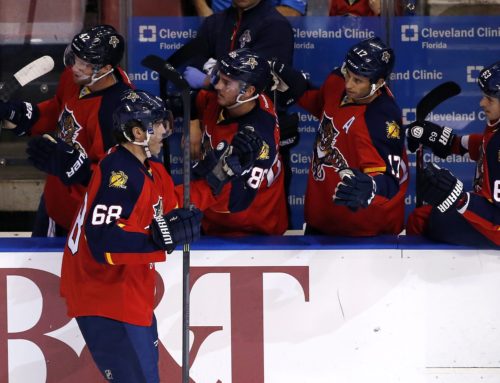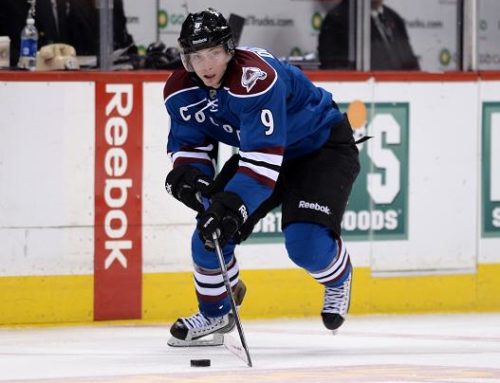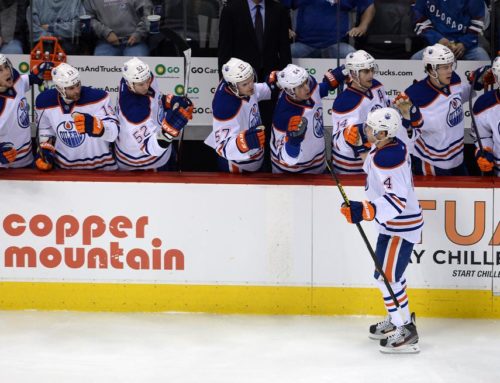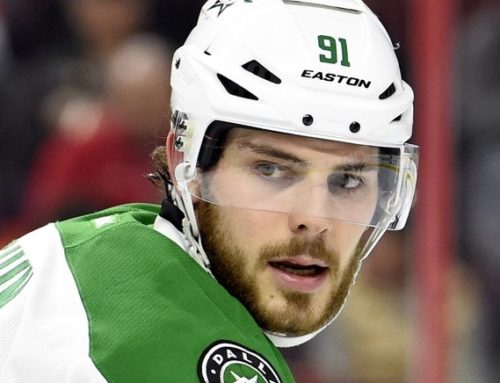
Which version of Mike Green will we witness in his first season in Detroit?
Matt Cane and Rob Vollman have devised a system to project a player's future performance by finding players with common statistics historically (Vollman, on the left) and in the modern day (Cane, on the right). This article is part of a series to introduce readers to their system, and to demonstrate how it can give you an edge in fantasy hockey.
From a fantasy hockey perspective, Mike Green is a fascinating player. In his prime, he once bagged 31 goals and scored over 70 points in back-to-back seasons. On the flip side, he was carefully sheltered on a third pairing in Washington last year, usage that can sometimes be typical of an NHL player's last gasp. Having signed him to a lucrative three-year deal, clearly the Detroit Red Wings see him as someone with plenty left to contribute – but are they right?
With 109 points in 177 games since the 2013 lockout, which ranks 19th among NHL defensemen, and 11th on a per-game basis, Green's historical comparables (on the left) include some potent puck-moving blueliners. However, the use of more modern statistics compiles a list of sheltered defensemen (on the right) that suggest that a tumble is just as likely as continued success.

Rob's Take: There's a good reason for the big gap between these two weighted averages. Without access to player usage metrics, or even an ice time breakdown, there's no way to tell if high-scoring defensemen from the past were sheltered offense-only weapons, like Green, or more complete top-four options. Without that information, one can only presume Green's scoring will continue roughly along that same track, but having access to that modern perspective warns us of a very real downside risk.
With the addition of expensive free agents Matt Niskanen and Brooks Orpik, to go with John Carlson and Karl Alzner, Washington was deep on the blue line last year. New coach Barry Trotz chose to play Green on the third pairing with the likes of Nate Schmidt, Jack Hillen, and then Tim Gleason. Even under Adam Oates in 2013-14, Green mostly played with Schmidt, Hillen, and Dmitry Orlov – not counting some brief stretches in the top four with Karl Alzner.
Now, I doubt that the Red Wings paid $18 million over three years to play Green on a depth pairing with someone like Jakub Kindl. But, I also doubt that he'd be trusted to play 25 minutes a night on the top pairing with Niklas Kronwall, either.
It's hard to peg exactly where Green will fit in. After all, some sheltered players continue to shine, like Keith Yandle, Kevin Shattenkirk, and Tyson Barrie, but many don't. Those modern comparables are absolutely no accident, and if we had access to these types of stats throughout history, the historical list might look the same. Who knows? But, if Green finishes with fewer than 30 points this year, everybody owes Matt a Coke.
Matt’s Take: Where do we start with Mike Green? He’s a difficult player to read because he’s been so up and down over the course of his career, and his last few years in Washington had him stuck playing a limited role that didn’t really allow for a fair evaluation of his true talent or potential. On the upside, Green was a player who was arguably the best offensive defencemen in the league for a two-year span. And it’s that potential that we really see in a lot of his higher modern comparables – Keith Yandle, Kevin Shattenkirk and Tyson Barrie all represent the player that Mike Green was, and, in theory at least, could become again. But take a closer look at how old each of those players were when they put up their comparable years – 23, 22, and 23 respectively – not necessarily a fair comparison for a player coming up on 30.
At the bottom end of his modern comparables are players who are closer to Green’s current age – Cory Murphy’s last (partial) season in the NHL, Kurtis Foster’s year on the 62-point Oiler club, or, in the best case, Joe Corvo’s 31-year-old season with the ‘Canes. If these players are a preview of what Green has coming up based on his progression down the aging curve, most fantasy players would be wise to take a pass. And it’s hard to ignore aging when it comes to blueliners – the fall can be fast and hard, and you can’t afford to spend a whole year hoping that a pointman finds the scoring touch he had six years ago.
In spite of all this, the older modern comparables don’t necessarily feel right, and although it may be a stretch to expect Green to play like his 23-year-old self again, surely he has more value than a journeyman, right? The historical projections, on the other hand, seem to strike the right balance between the potential he’s shown and the reality of an aging but talented blueliner who may have seen better years. A mid-career Mathieu Schneider or Lubomir Visnovsky is likely a better bet for Green than any of the lower end players that the modern projections might offer. And certainly if you asked 100 people who Mike Green resembles most at this stage of his career, 99 of them would say that he’s more likely to be Brian Leetch or Sandis Ozolinsh next year than Kurtis Foster or Cory Murphy.
One other thing to keep in mind is how the change of scenery will play out for Green. Detroit has a history of getting the most offensively out of their defensemen and there’s no reasons to suspect that’ll change anytime soon with Mike Green. If he’s given a chance to re-establish himself in the top 4 for the Wings, Green should have no trouble hitting his historical average, but if he’s playing the same role as he did in DC, totals closer to his worst case may be more reasonable.
For complete projections on over 700 active NHL players, Vollman and Cane Historical Projections 2015 is available exclusively through the Dobber store for just $4.99 – or it's free if you bought the Fantasy Guide using the coupon code on page 151!





 EDM
EDM FLA
FLA CHI
CHI ANA
ANA L.A
L.A MTL
MTL TOR
TOR
